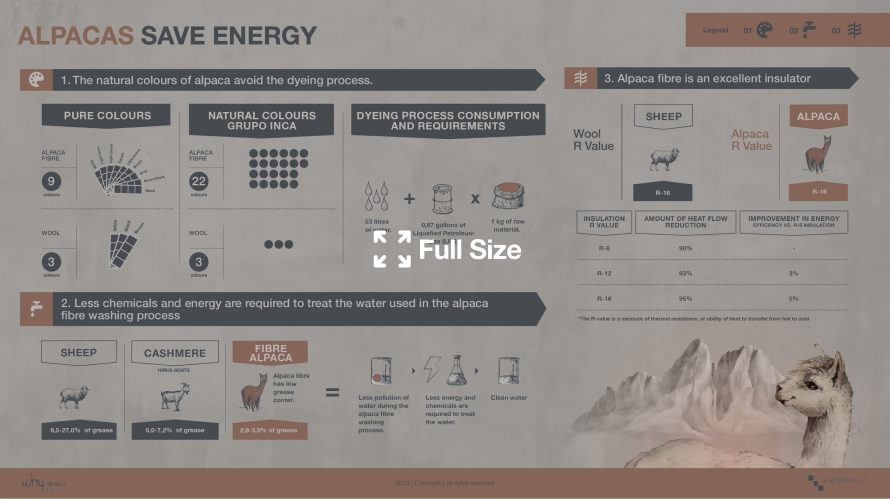The natural colours of alpaca are undyed, hence, environmental issues associated with the dyeing process are minimized
Alpaca fibre comes in more than 22 natural colours. These colours are classified into nine pure colours: White, light fawn, light camel, camel, light brown, brown grey, brown/black and black with many other subtle shades and hues. Therefore, alpaca fibre can be blended into a infinite array of natural colours, including combinations that do not occur naturally, thereby avoiding industrial dyeing and saving important amounts of water and energy.
The treatment system for the water used in the washing process of alpaca fiebre requires less chemicals and energy than what is needed for other animal fibres.
Compared to other animal fibres, alpaca fibre has a low grease content (2,8 – 3,9%), wich means that much less energy and chemicals are required to treat the water used for its washing process.
Alpaca fibre is an excellent insulator and additionally it is highly flame-resistant, which makes the fiebre optimal for home products.
Alpaca fibre is an excellent insulator for both heat and cold. Due to this property, home products made of alpaca fibre like carpets, blankets, quilts and curtains are very well-know within the category of home products. Alpaca fibre is also highly natural fibre material used by the construction industry to insulate homes and businesses.





